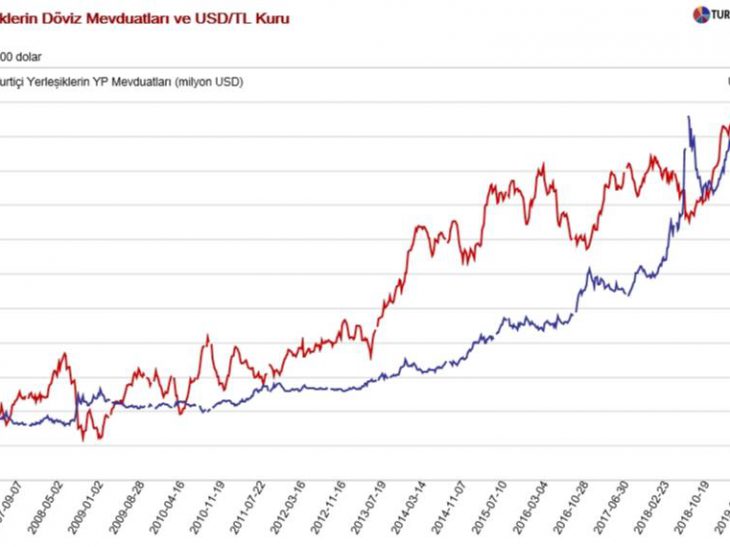Prof Hakan Kara: Rate hikes will jeopardize banks’ capital adequacy
 hakan-kara
hakan-kara
Low-interest bonds erode capital adequacy of banks, claimed former research head of Central Bank of Turkey and a potential nominee for the post to run monetary policy, in his tweet flood.
Prof. Hakan Kara pointed out that the capital adequacy ratio of the banking sector may decline to 12 percent in an unfavorable scenario according to his rough stress test results.
Former chief economist of the Central Bank of the Republic of Turkey (CBRT) and Bilkent University faculty member Prof. Dr. Ali Hakan Kara stated that the financial risk brought by low-interest bonds forced upon commercial lenders by CBRT’s so-called informal macro-prudential rules is at a considerable level.
Prof. Dr. Kara calculated how the banking sector, which has to hold low-interest bonds due to the Central Bank's regulations, would be affected by possible interest rate hikes. According to the calculations, in an unfavorable scenario, the total capital adequacy ratio (CAR) of banks may decrease by roughly 5 percentage points and fall back to the target limit of 12 percent.
"Complementary policies of the Treasury and the BRSA are also of great importance"
Prof. Dr. kara stated: "This rough analysis we have made shows that the financial risk that will arise in case of a sharp correction in asset prices is at a substantial level. Therefore, complementary policies of not only the CBRT but also the Treasury and the BRSA in the coming period are of great importance to ensure solvency in the banking system".
Prof. Dr. Kara noted that the amount of bonds that will be affected by the interest rate hikes is 401 billion TL; and assumed 15 percent yield since the current average returns are not known.
Prof. Dr. Kara issued the following statements:
"The requirement for banks to hold low-interest Treasury bonds is much debated. These bonds add significant risks to bank balance sheets. In this (long) tweet series, we will try to calculate roughly how much a possible interest rate increase could deduct from banks' capital.
[embed]https://www.youtube.com/watch?v=O6b5mxF3Ab8&t=451s[/embed]
Banking system’s total TL-denominated securities amounted to 1.709 billion TL as of March. Based on the Financial Stability Report of October 2022 by CBRT, we project that 46% of this is with fixed interest rate, of which 51% is valued at fair value (marked to market).
Therefore, the amount that will be affected by the TL interest increase is
1.709*46%*51% = 401 billion TL.
We do not know the average maturity of bank-held securities. Let's roughly use the average duration of the central government domestic debt stock, which is 3.7 years, as an estimate.
We do not know exactly the current average return of these assets, either. Average interest rate of fixed-rate domestic borrowing in TL were as follows in recent years:
2019: 18.3%,
2020: 10.5%;
2021: 17.5%;
2022: 16.3%.
Thus, we assumed the current average return as 15%.
Suppose in a pessimistic scenario, bond yields increase by 20 percentage points per maturity. As a result of the 20-point interest increase, roughly
Loss: 401 billion TL * -3.7 years * 0.20 / 1.15 = 258 billion TL.
As of February, the statutory equity of the banking system is 1.82 trillion TL, with a current capital adequacy ratio of 17.1%. A loss of 258 billion TL takes away 14.2% of legal equity.
In this case, the average capital adequacy ratio of the banking sector decreases by 2.4 points to 14.7%. Of course, this is a rough aggregated analysis, and the cost will differ considerably on a bank basis.
Finally, it is worth remembering that the impact of interest rate hikes on banking balance sheets is not limited to bond pricing.
According to the Financial Stability Report September 2022 data, the troubled loan ratio of the sector (mostly loans under close monitoring) is 5.8%, the ratio of non-performing loans (NPL) and loans classified under close monitoring is 11.3%. As of the end of March, the NPL ratio is 1.9%.
A rise in interest rates and a possible recession may also weaken the quality of the banking balance sheet through non-performing loans. For example, a 5-point increase in the NPL ratio may reduce the sector's capital adequacy ratio by 1.5 points, assuming 100% provision has been made.
If we add a 25% exchange rate shock to the worst-case scenario, the capital adequacy ratio (CAR) of banks will decrease by 1%. In summary, in a negative scenario, the total CAR of banks may decrease by roughly 5 points. This brings us to the target CAR limit of 12%.
This rough analysis shows that the financial risk that will arise in the event of a sharp correction in asset prices is at a substantial level. For this reason, safety-enhancing policies of not only the central bank, but also the Treasury and the BRSA in the upcoming period are of great importance.
Follow our English language YouTube videos @ REAL TURKEY: https://www.youtube.com/channel/UCKpFJB4GFiNkhmpVZQ_d9Rg
And content at Twitter: @AtillaEng
Facebook: Real Turkey Channel: https://www.facebook.com/realturkeychannel/





